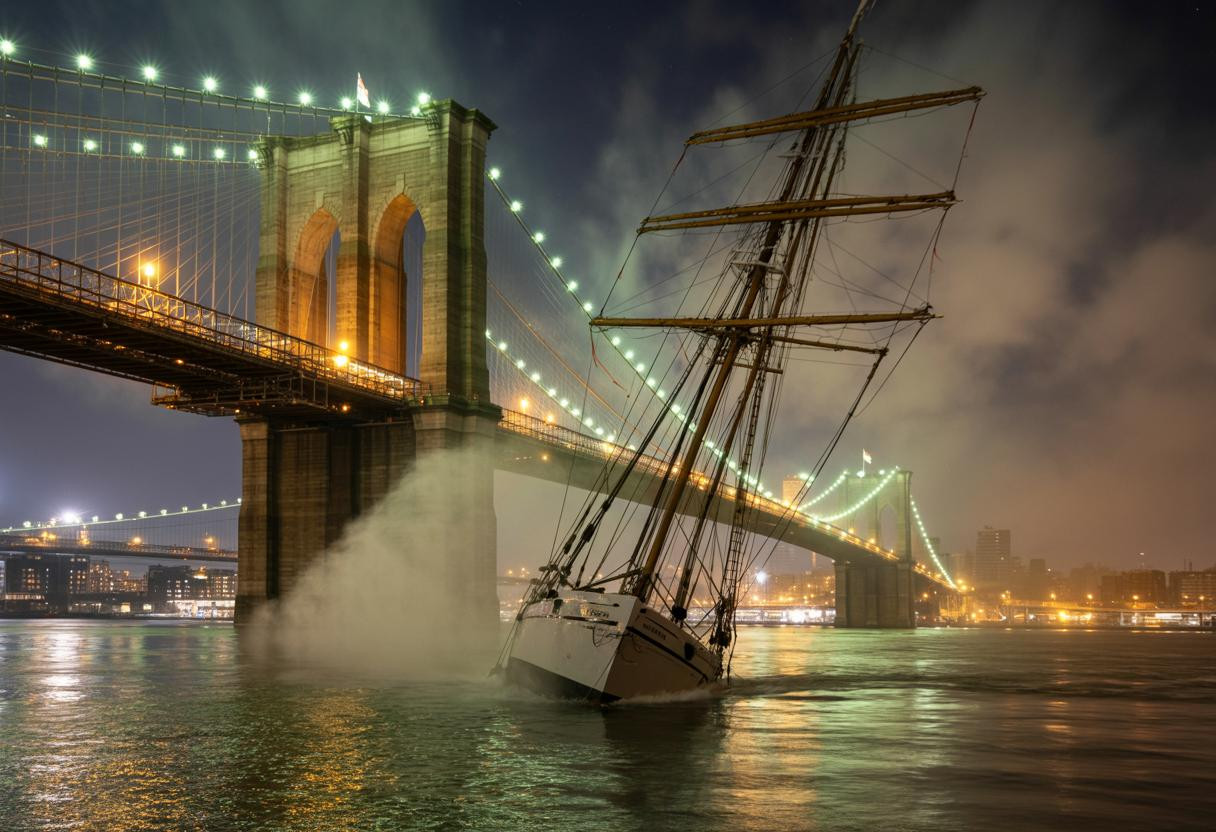Tragedy struck New York City yesterday evening when the Mexican Navy training vessel Cuauhtémoc collided with the iconic Brooklyn Bridge, resulting in two deaths and leaving 19 injured. The devastating accident occurred around 8:30 PM as the ship departed from Pier 17, bound for Iceland as part of its international goodwill mission.
A fatal tradition turns tragic
Following naval tradition, crew members were positioned high on the ship’s three 147-foot masts during departure when disaster struck. The vessel reportedly experienced a sudden power failure, leaving it unable to navigate properly in the East River’s currents.
“The sailors were performing a ceremonial tradition, standing on the yards when the impact occurred,” explained maritime expert Carlos Vega. “When those masts hit the underside of the bridge, it was like watching a tree being felled – catastrophic and immediate.”
Eyewitness accounts paint horrific scene
Witnesses described the harrowing moment when all three masts snapped upon impact. “We saw sailors being thrown around like rag dolls,” recounted Brooklyn resident Maya Thompson. “It happened so fast, but the sound of splintering wood and screams will stay with me forever.”
The ship, which had arrived in New York on May 13, was carrying 277 people when the accident occurred. First responders rushed to the scene, with tugboats later helping guide the damaged vessel to Pier 36 where passengers could safely disembark.
Bridge survives, investigation underway
Despite the forceful collision, the 142-year-old Brooklyn Bridge suffered no structural damage according to city officials. This resilience stands in stark contrast to other threatened landmarks like the rapidly sinking Maldives.
The National Transportation Safety Board dispatched a specialized “go-team” to investigate the incident. Early findings suggest mechanical failure may have played a critical role in the accident.
The Cuauhtémoc: A storied vessel
Built in Spain in 1981, the Cuauhtémoc serves as a training ship for Mexico’s Heroic Naval Military School. Prior to this tragedy, the ship had:
- Visited 212 ports across 64 countries
- Sailed approximately 756,085 nautical miles
- Completed the equivalent of 35 circumnavigations
- Trained thousands of naval cadets
Safety protocols questioned
Maritime safety experts are now questioning the wisdom of traditional practices in urban waterways. As technology evolves—similar to how AI is transforming white-collar jobs—maritime traditions may need reevaluation.
“This tragedy represents a collision between tradition and modern safety standards,” said Dr. Eleanor Rivera, professor of maritime studies. “Just as scientists transform lead into gold, we must transform our approach to safety.”
Medical response mobilized
The injured were transported to area hospitals where medical teams were prepared for mass casualties. This rapid response system mirrors developments like China’s AI hospital that can handle thousands of patients efficiently.
Critical injuries include:
- Severe trauma from falls
- Crush injuries from collapsing masts
- Multiple fractures requiring surgical intervention
Will sailing traditions navigate a new course?
As investigators piece together what happened on that fateful evening, the maritime community faces difficult questions about balancing tradition with safety. Like ancient seafarers navigating by stars, we must chart a course that honors heritage while embracing modern safeguards—ensuring that the tragic deaths aboard the Cuauhtémoc serve as a catalyst for change rather than merely a footnote in maritime history.
